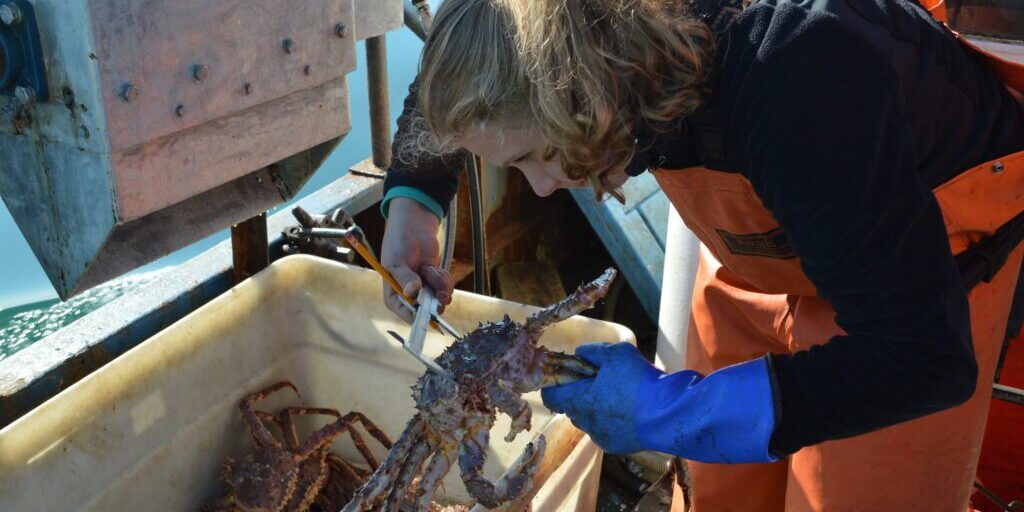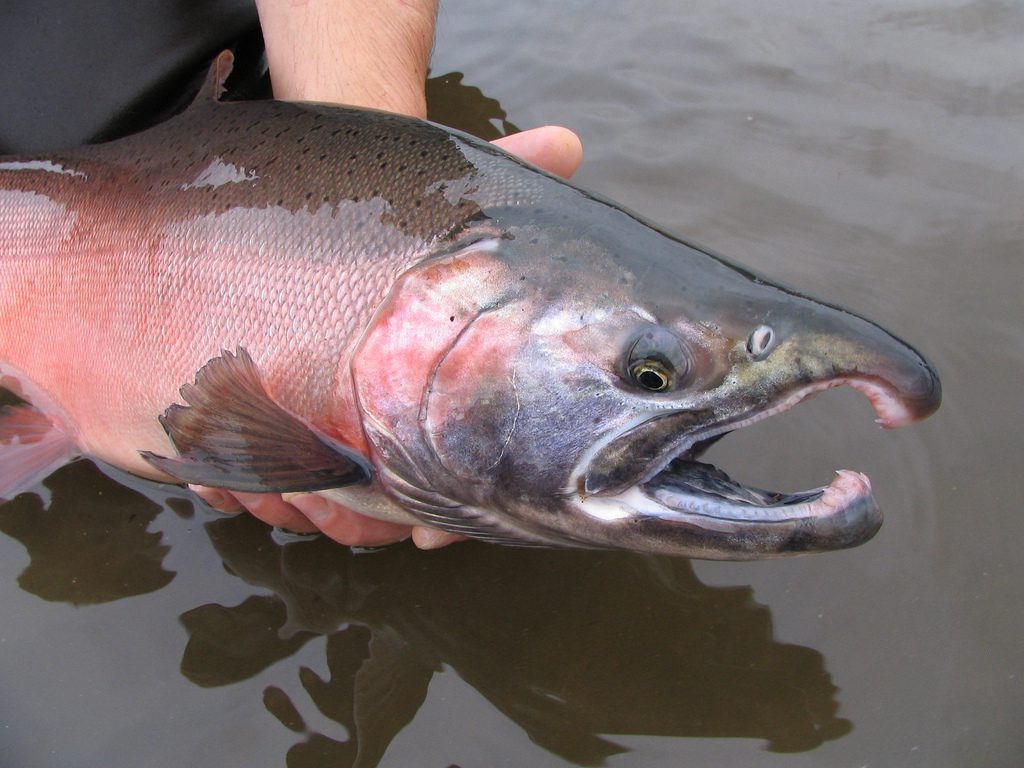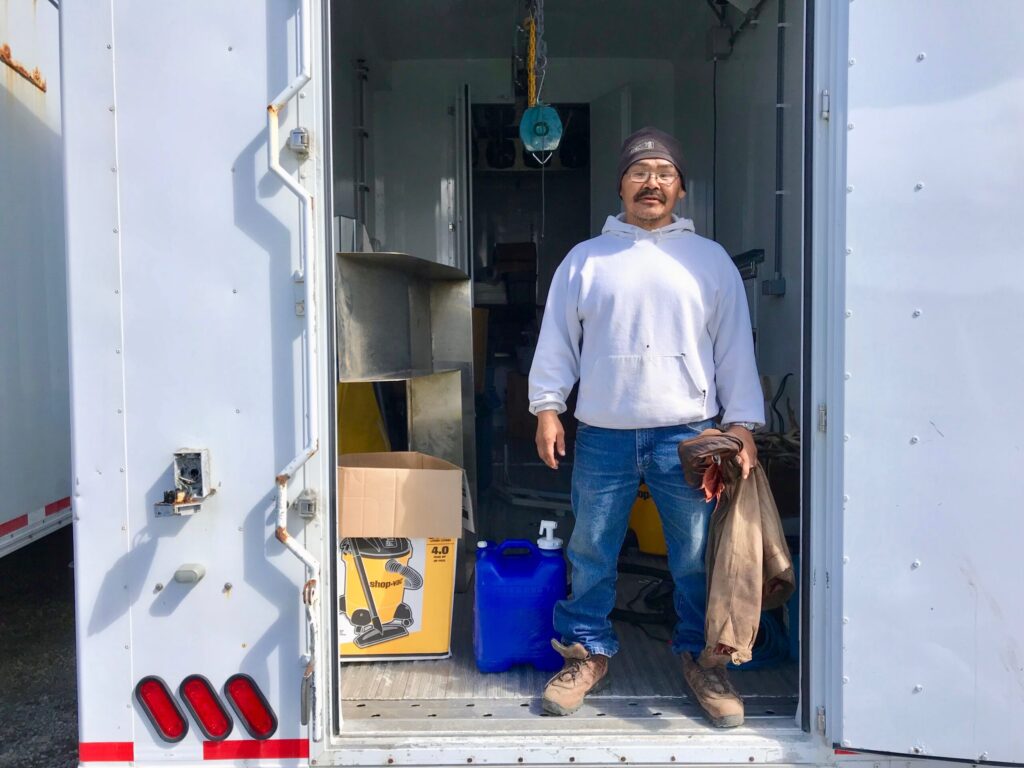Early Tuesday morning, the Erica Renee fishing vessel shoved off for a long day of commercial crabbing. It was business as usual, with one small exception—Anneliese Moll, a crab observer for the Alaska Department of Fish & Game, was aboard collecting data for the North Pacific Research Board’s crab migration project.
For the past three years, Phil Pryzmont, local crabber and captain of the Erica Renee, has been taking observers into the sound with him as part of the project.
“There hasn’t been much research done on Norton Sound crab over the years. Nobody really knows about the migration patterns, the growth patterns,” said Pryzmont. “Fishermen all have our ideas of how the crab migrate, but nobody really knows for sure. So this might be some of the first hard data on actual crab movement.”
To account for this gap in current data, the migration project began in 2012 with grants from Fish & Game and the Norton Sound Economic Development Corporation.
Moll, Fish & Game’s observer, is a student at the University of Alaska Anchorage and has been working on the project for the past two summers. Now, she works almost as a regular deckhand in between taking recordings for the migration project. On the four-hour ride out to the crab pots, she explained how she collects the data.
“So out of the 40 pots we sample five. And from that we’ll take all of the contents—every single starfish and every single critter that comes up—and stick them into a tote that I brought,” said Moll. “And I will count— and for the crab that get in there, I’ll measure all of them. We measure on the carapace—from the right eye socket down to the ‘V’ that’s in the center of their back.”
Moll said part of the project is recording bycatch, to get an idea of what else is making it into the pots that crabbers aren’t bringing back to sell. On Tuesday, bycatch was mostly sea stars, halibut, cod, and a couple of bullhead fish. Moll also gathered data for the crabs that are normally thrown back in the water: females and all crabs smaller than the legal take limit of four and three-quarter inches across. She took note of where they were caught, the crabs’ shell conditions, and for females, the fullness and health of their eggs. Moll also recorded any tagged crabs that were pulled up from Fish & Game’s spring tagging.
The migration project was initially conceived as a three-year test run, and with the final year wrapping up, Pryzmont is hopeful that funding can be secured for its continuation.
“The more information that Fish & Game has, the better decisions they can make towards crab management. Crab management, proper management, is essential,” said Pryzmont of fellow crabbers. “We’re completely invested in it. We’ve invested years of our time and everything we’ve ever owned into the crab fishery, and sustainability is absolutely essential to us.”
Pryzmont said a larger base of information would be useful for future comparison, since this project has only been the beginning of data collection for eastern Norton Sound red king crabs.
Observers like Moll will continue joining vessels until the end of crabbing season this summer.







